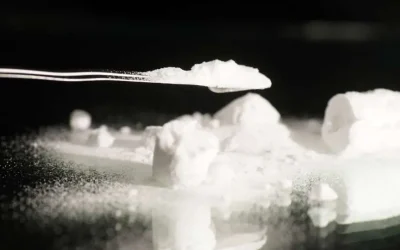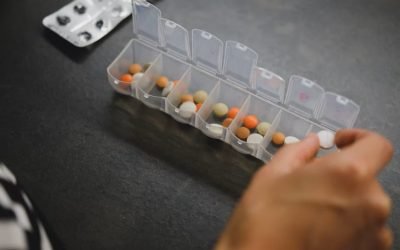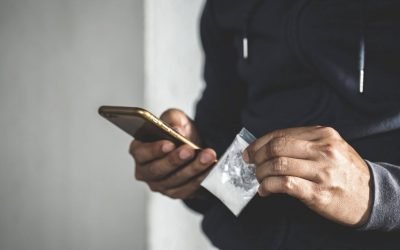Last updated: November, 2025
Prescription medications can be a lifeline when used as intended. They help manage pain, ease anxiety, or support sleep. But for many, the line between use and dependence becomes blurred over time. When the body or mind starts needing medication to function or feel normal, this may signal prescription drug addiction.
It’s a growing concern worldwide (including in Europe) as more people become dependent on painkillers, sedatives, or antidepressants without realizing how addictive they can be. Understanding how this dependence begins and how to treat it safely is the first step toward recovery.
Understanding Prescription Drug Addiction
Prescription drug addiction occurs when medications that are meant to heal start controlling daily life. Unlike illicit drugs, these medications are often introduced under medical supervision, which makes the signs of addiction easier to overlook.
Dependence can be physical, when the body adjusts to the drug and needs it to function, or psychological, when a person feels unable to cope without it. Over time, tolerance builds (meaning higher doses are needed to feel the same effect) and withdrawal symptoms appear when use is reduced.
Commonly misused medications include painkillers, sedatives, sleeping pills, and antidepressants. Each affects the brain differently, but all share a common thread: when overused, they can alter brain chemistry and create powerful cravings.

Commonly Misused Prescription Drugs
Some prescription drugs are more likely to cause addiction than others, especially those that influence mood, pain, or relaxation.
- Benzodiazepines, such as diazepam, lorazepam, or oxazepam, are prescribed to relieve anxiety or help with sleep. They slow brain activity, creating calmness and drowsiness. However, long-term use can lead to benzodiazepine addiction, as the brain becomes reliant on them to feel relaxed.
- Opiates and painkillers, including oxycodone, morphine, codeine, tramadol, and fentanyl, work by blocking pain signals. They are effective for short-term pain management but carry a high risk of opiate addiction and tolerance.
- Sleeping pills and sedatives, such as zopiclone or temazepam, can also cause physical dependence. People often find it difficult to sleep without them, even when the original reason for using them has passed.
Even antidepressants can lead to antidepressant dependence when stopped abruptly, as the brain needs time to adapt to changes in serotonin levels.
How Prescription Drug Addiction Develops
Addiction to medication can develop slowly and quietly. It often begins with a genuine prescription to treat pain, anxiety, or insomnia. But with repeated use, the body starts adapting, needing more of the substance to feel the same relief.
This tolerance can lead to overuse, and soon the person may find themselves depending on the medication for emotional stability or energy. Attempts to stop might bring on withdrawal symptoms such as restlessness, fatigue, or mood swings.
Sometimes the addiction arises from nonmedical prescription drug use: taking medication not prescribed, or in higher doses, to feel euphoric or relieve stress. Regardless of the path, the result is the same: the brain associates the drug with comfort, and breaking that link requires professional help.
Signs and Symptoms of Medication Addiction
Recognising the signs of prescription drug dependence is essential for early intervention. Warning signs may include:
- Taking more medication than prescribed
- Visiting multiple doctors to obtain additional prescriptions
- Feeling anxious, irritable, or low when not using
- Difficulty concentrating or sleeping without medication
- Ignoring work, studies, or relationships
- Hiding medication use from others
Physical symptoms may include fatigue, nausea, headaches, or tremors, depending on the type of drug. Psychological dependence often brings anxiety or depression when medication is reduced or stopped. These signs signal the need for prescription drug treatment before the addiction deepens.
Risks of Long-Term Prescription Drug Use
Prolonged use of prescription medications can impact nearly every system of the body. Benzodiazepines can impair memory, concentration, and coordination. Opiates and painkillers can damage the liver, heart, and digestive system.
When medications are combined with alcohol or other sedatives, the effects can become dangerous. Mixing these substances increases the risk of slowed breathing, unconsciousness, or even overdose.
Pregnant or breastfeeding individuals face additional risks, as active ingredients can affect the baby’s development. Moreover, poly-drug use (combining several medications or drugs) heightens the chance of unpredictable and harmful reactions.
In the long term, the body may lose its natural ability to regulate energy, mood, and sleep. This is why medical support is crucial when tapering off prescription drugs.
Effective Treatments for Prescription Drug Addiction
Overcoming addiction requires more than stopping the medication. It involves rebuilding physical balance, emotional stability, and confidence. Effective prescription drug rehab focuses on treating both the mind and body.
Medical Detoxification Under Professional Supervision
Prescription drug detox is the first phase of recovery. It allows the body to clear substances safely under constant medical supervision. Detox must be tailored to the type of medication; for example, benzodiazepine withdrawal and opiate withdrawal require gradual reduction and close monitoring to prevent complications.
A medically supervised detox ensures safety, manages symptoms, and prepares the individual for the therapeutic stage of recovery.
Therapy and Counselling
After detox, therapy helps address the root causes of addiction. Cognitive behavioural therapy (CBT) helps individuals recognise and change thought patterns that trigger use. Trauma therapy and group counselling create a safe space for reflection and connection.
Therapy focuses on emotional awareness, building resilience, and learning healthier ways to handle stress. It’s a key part of any medication addiction treatment plan, helping prevent relapse and restore confidence.
Holistic Treatment for Long-Term Recovery
Addiction affects every part of life, so recovery must also be holistic. This approach supports body and mind through rest, nutrition, mindfulness, and time in nature. Activities that promote calm and self-awareness (such as yoga, meditation, or creative expression) help restore equilibrium and strengthen wellbeing.
A holistic environment encourages healing that lasts, not just detoxification.
Choosing the Right Prescription Drug Rehab
Finding the right prescription drug rehab is one of the most important decisions in recovery. A safe and structured environment helps individuals regain balance while being cared for by professionals.
Specialised Medical Supervision
Look for centres that provide 24-hour medical supervision led by experienced teams familiar with benzodiazepine and opiate addiction. Medical monitoring ensures detox is safe and gradual, reducing withdrawal discomfort.
Individualised and Adaptive Programmes
Each person’s experience with medication addiction is different. The best rehabs offer individualised programmes tailored to specific medications, duration of use, and personal history. Custom treatment increases the chances of lasting recovery.
A Holistic and Integrated Approach
An effective rehab treats more than the addiction: it restores physical, emotional, and psychological wellbeing. A programme combining therapy, nutrition, and mindfulness helps individuals reconnect with themselves and sustain change.
A Calm and Supportive Environment
Environment plays a vital role in recovery. A setting that feels calm, private, and connected to nature allows the mind and body to rest. This kind of environment supports healing from the inside out.
Recovery and Long-Term Healing
Recovery from prescription drug addiction is a gradual process, not a single event. It involves patience, support, and learning to live without dependence. Each small step (from detox to therapy to rebuilding routines) brings strength and clarity.
Healing means rediscovering what balance feels like, both physically and emotionally. With time and care, life without medication dependence becomes not only possible but deeply fulfilling.
Frequently Asked Questions: Prescription Drug Rehab
Common signs include taking higher doses than prescribed, needing medication to manage daily emotions, or feeling anxious and restless without it.
Stopping suddenly can be dangerous, especially with benzodiazepines or opiates. A medical detoxification under professional supervision is the safest approach.
During detox, the body clears the medication while medical staff manage symptoms and provide comfort. Once stable, therapy begins to address the psychological aspects of addiction.
Treatment duration depends on the medication type, length of use, and individual needs. Most inpatient programmes last between four and eight weeks, followed by outpatient support.
At Hacienda Paradiso, the world’s first eco-luxury rehab located in Málaga, Spain, treatment for prescription drug addiction combines clinical expertise with a deeply restorative environment. Each programme is personalised, medically supervised, and designed to help individuals regain balance and confidence in daily life. Surrounded by nature, therapy, and care, recovery becomes a sustainable and truly transformative experience.









